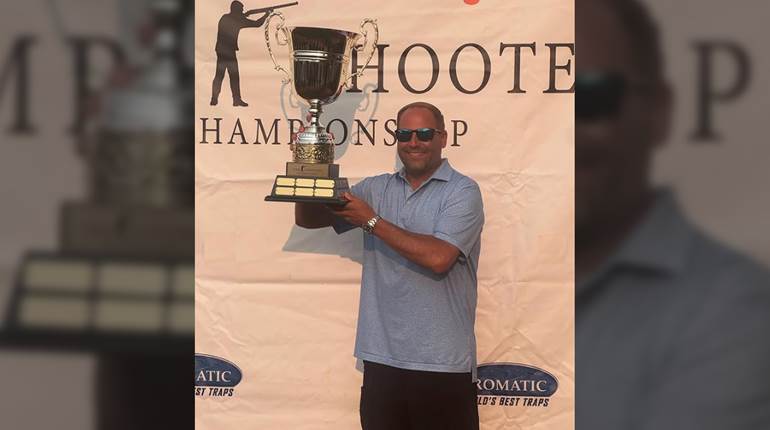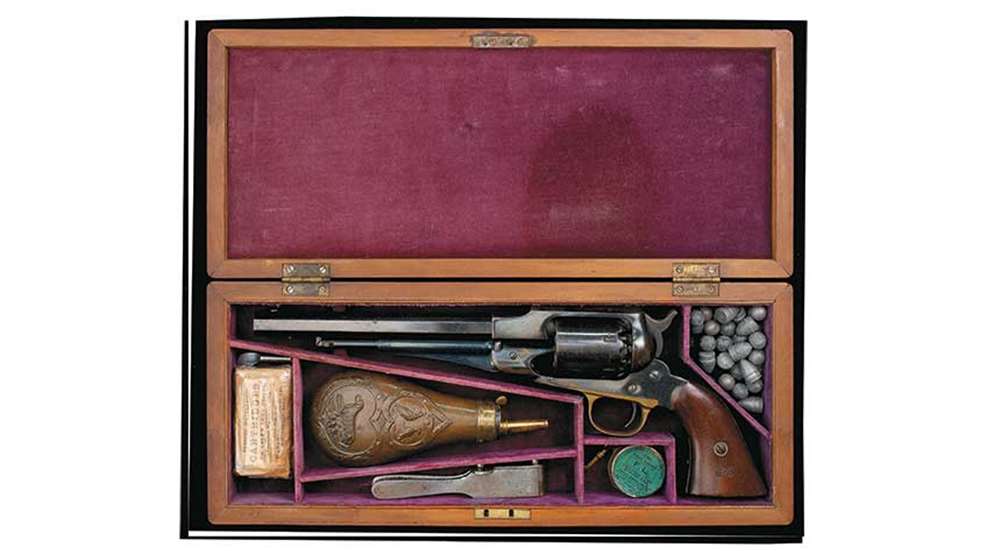
This article, "Civil War Remingtons," appeared originally in the November 2003 issue of American Rifleman. To subscribe to the magazine, visit the NRA membership page here and select American Rifleman as your member magazine.
When one thinks of percussion revolvers in U.S. military service, Colt’s percussion revolvers tend to be the first to come to mind, but Remington revolvers played an important, if often overlooked, role as well. The Remington revolvers issued to both the Union Army and Navy during the Civil War were of three models. They were the Remington-Beals, “Old Model” and “New Model” revolvers.
Remington-Beals RevolversThe large, solid-frame Remington revolvers purchased by the U.S. Navy and Army during the Civil War were patented by Fordyce Beals, a Remington employee. Beals received his U.S. Patent No. 21,478 on Sept. 14, 1858, for his design which required lowering of the loading lever to allow the cylinder pin to be pulled forward to free the cylinder.
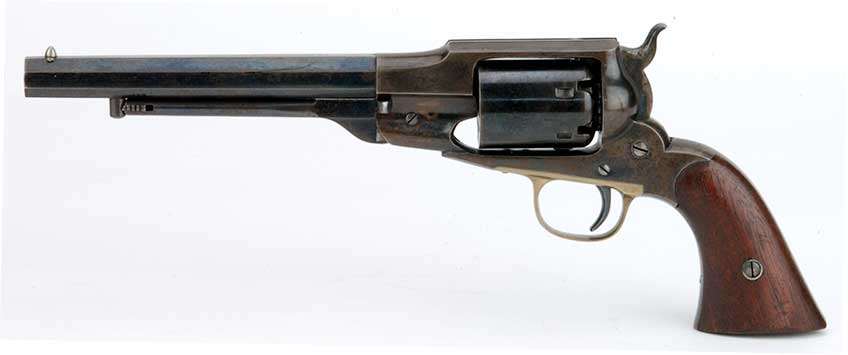
Between 1860 and 1862, the Remington factory manufactured 2,000 to 3,000 .44-cal. and 15,000 .36-cal. Beals revolvers. The barrel threads on the Beals revolvers are entirely concealed by the solid frame. Also, these wheelguns were not equipped with safety notches between the nipples. Additionally, the Beals’ loading levers are found to be smaller than those of the later models.
The .36-cal. six-shot, single-action percussion Beals are found with a 71⁄2” octagonal barrels while the .44s were equipped with 8” octagonal barrels. The barrels are marked: “BEALS PATENT SEPT 14, 1858/MANUFACTURED BY REMINGTON ILION, NEW YORK.” The barrel, lever, frame and cylinder are blued steel while the hammer is casehardened. The revolvers are equipped with walnut grips, and the trigger guards were of brass. The serial number can be found on the underside of the barrel.
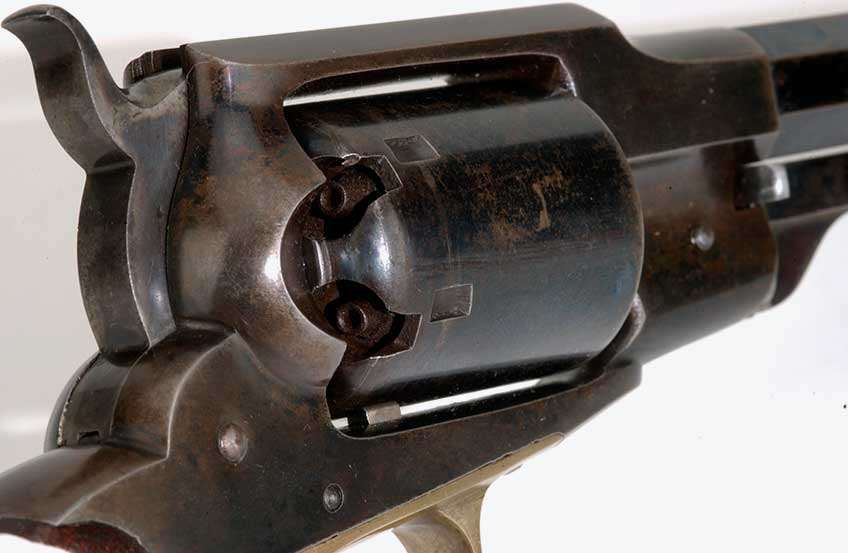
Prior to the outbreak of the Civil War, Remington sold Beals Revolvers to a wide range of customers, including a few in the South. Many New York dealers had large quantities of Remington-Beals revolvers on hand when the fighting broke out in the spring of 1861. By early 1862, the New York small arms merchants had sold to the Ordnance Department on the open market more than 4,000 .36-cal. Remington-Beals revolvers.
Samuel Remington traveled to Washington in the fall of 1861, offering to sell his revolvers to the government at a cost of $15 each—or $10 less than what Colt was charging the Ordnance Department for its .44-cal. revolvers. Even with the reduced cost, the Army, by the end of March 1862, had taken delivery from the Remington factory of only 7,250 .36-cal. revolvers and 850 .44-cal. Beals revolvers at a cost to the Army of $15 each.
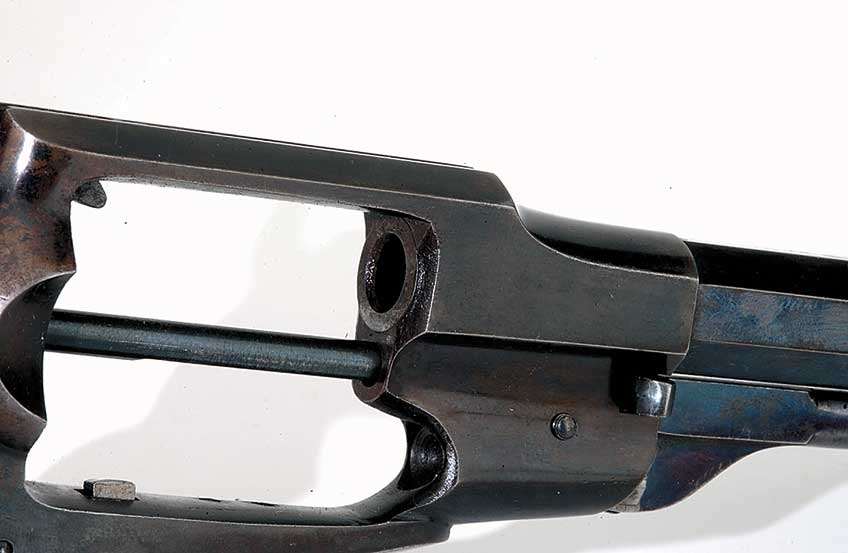
The Navy first test fired the Beals revolvers at the Washington Navy Yard in the spring of 1862. The Beals revolver delivered to the Navy Yard was fired 600 times. The test results found the accuracy of the Remington slightly better than the Colt but indicated the Colt was, overall, superior to the Remington.
Additional tests conducted later that summer resulted in the Remington being judged fully equal to the Colt. After those successful results, the Navy ordered 120 Beals Patent Revolvers in .36 caliber, plus ammunition and spare parts. The order of Sept. 15 placed the cost of the revolvers to the Navy at $12 each with deliveries to be made at the Portsmouth Navy Yard. By the end of the year, the Navy had requested deliveries of nearly 800 Remington revolvers.
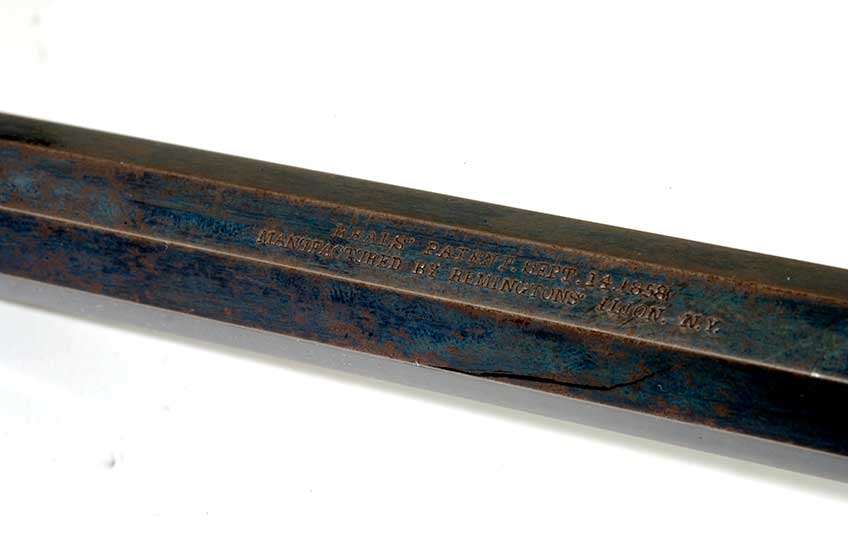
Remington Model 1861 or “Old Model” Revolvers
The second Remington revolver obtained by the Ordnance Department was the Model 1861, or “Old Model.” U.S. Patent No. 33,932, dated Dec. 17, 1861, covering those revolvers, allowed the cylinder pin to be drawn forward to remove the cylinder without lowering the loading lever. This was accomplished by making a cut along the top of the loading lever to allow the base-pin to be pulled forward to remove the cylinder without having to lower the loading lever.
The Model 1861 was manufactured in both .36 and .44 calibers. The quantities fabricated came to about 8,000 .36-cal. revolvers and 12,000 .44s. These single-action percussion revolvers are stamped on the barrel: “PATENTED DEC. 17, 1861/ MANUFACTURED BY REMINGTON’S, ILION, N.Y.” The revolvers have a blued finish and a casehardened hammer. Most, but not all “Old Model” revolvers are found without safety notches between the nipples. Also, the barrel threads are visible on most.
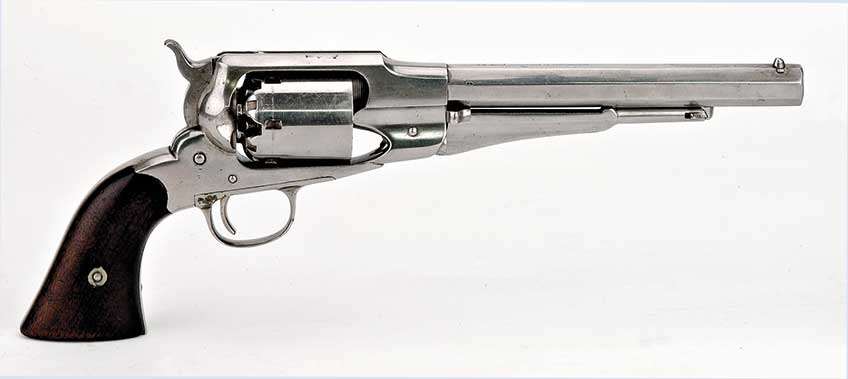
E. Remington & Sons on June 13, 1862, entered into two Army contracts. The first contract called for 5,000 Model 1861 caliber .36 revolvers at a cost of $12 each. The second contract at the same price requested 20,000 caliber .44 revolvers.
The first 5,000 caliber .44s were to be of the Model 1861 design and the balance of a pattern to be accepted later by the Ordnance Department. By the end of 1862, the .36-cal. revolvers on the order were in the Army arsenals. The Army obtained no further deliveries of .36-cal. revolvers. The number of .44s delivered by that time had reached 4,902.
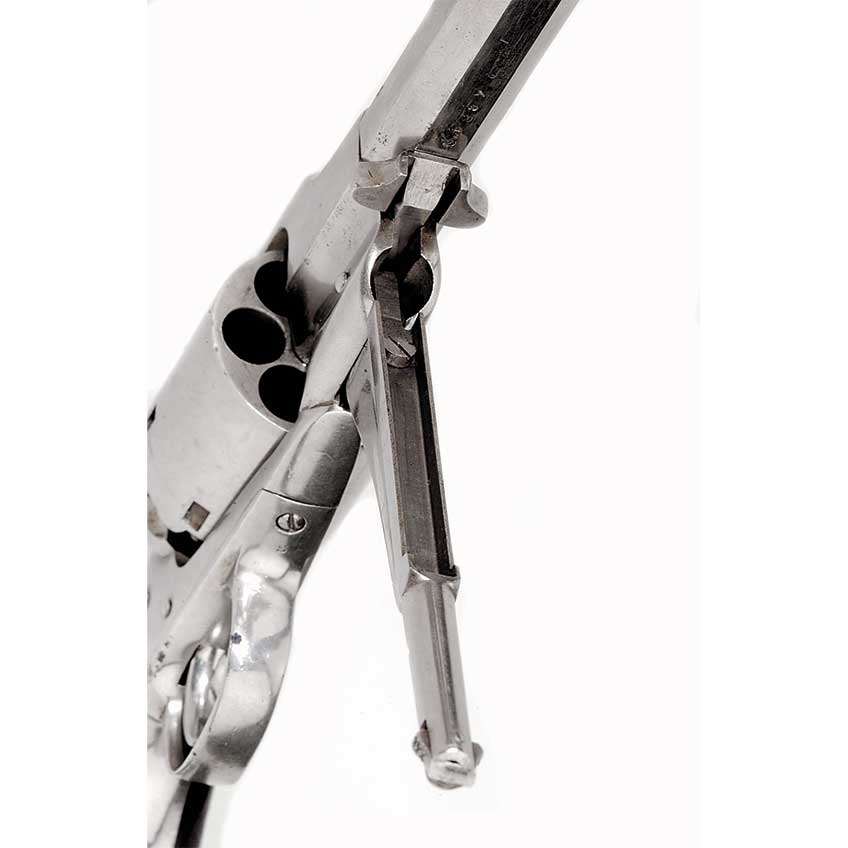
The Navy was also purchasing Remington revolvers in the latter part of 1862. It is not clear how many of its revolvers were of the Beals pattern or the Model 1861 design, but the Model 1861 production was short-lived. In military use, the cylinder pin was found to slide forward from recoil, jamming the cylinder’s rotation and causing a stoppage of firing.
Remington “New Model” Revolvers
The last of the Remington wartime revolver deliveries—and the largest—were for the “New Model” revolvers. The “New Model” .44s delivered to the Army were equipped with 8” barrels, while the Navy’s .36s had 73⁄8” barrels. The top barrel flat on “New Model” revolvers is stamped in three lines:
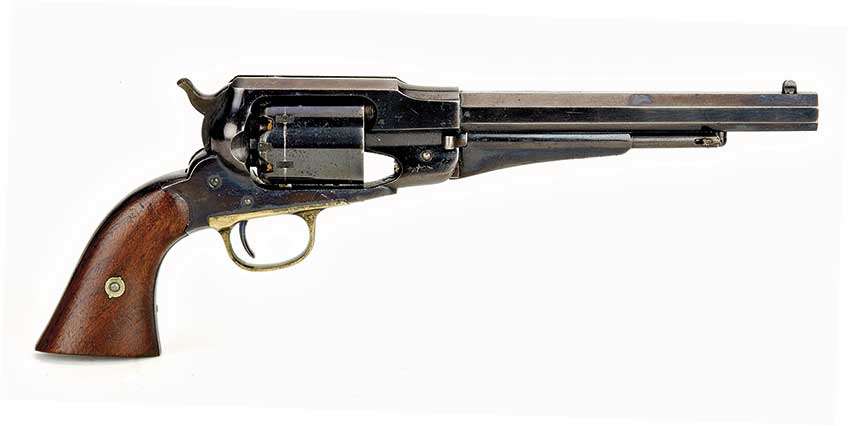
“PATENTED SEPT. 14, 1858/ E. REMINGTON & SONS, ILION, NEW YORK, U.S.A./ NEW MODEL.” The revolvers have a blued finish with a casehardened hammer. The serial number is located on the bottom of the barrel flat and under the left stock panel. Those revolvers were equipped with safety notches on the cylinder.
With the “New Model,” Remington went back to requiring the lowering of the loading lever to remove the cylinder. Between 1863 and the end of the production in 1875, an estimated 132,000 .44-cal. “New Model” revolvers were manufactured along with 22,000 .36s.
The Ordnance Department in 1863 took deliveries of 31,003 caliber .44 “New Model” revolvers, 58,003 in 1864 and 20,000 in 1865, for a total of more than 109,000 “New Model” revolvers. The Army did not take delivery of any of the .36-cal. revolvers of that model.
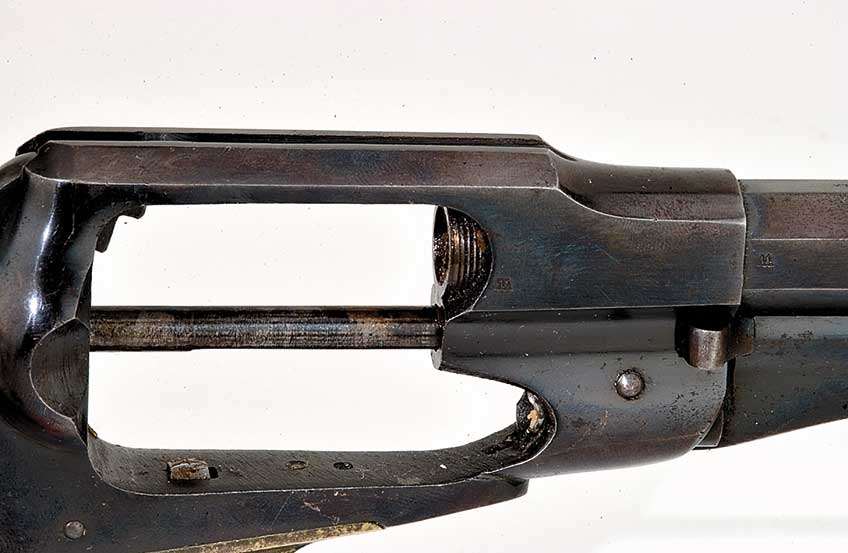
The largest contract for those revolvers occurred on Nov. 21, 1863, when the Army contracted with E. Remington & Sons for 64,900 caliber .44 revolvers with all appendages except bullet molds at a price of $12 each. That contract was $2 less than the price charged by Colt for its revolvers. The Remingtons were the main revolvers purchased by the Ordnance Department in 1864.
After the delivery in November 1863, no further wartime contracts were given to Colt. The last wartime contract for revolvers was given to Remington for 20,000 revolvers at an increased price of $15.50 each, which were received in 1865.
The U.S. Navy’s practice was to purchase only a sufficient quantity of small arms to meet the requirements for a given location. As requests came in from the various locations, the Navy would purchase the needed items. In that manner, about 20 requests were received for revolvers, and “New Model” .36 calibers were supplied for a total of more than 4,200 revolvers. Many of them are found with an anchor stamped on the barrel.
Remington Revolvers in Military Service
The Remingtons placed aboard ship were used in a variety of actions. They were issued to landing parties, nightly picket boats and for other duties in which revolvers were needed. The double-turret monitor U.S.S. Kickapoo was on station as part of the Western Gulf Blockading Squadron in 1865.
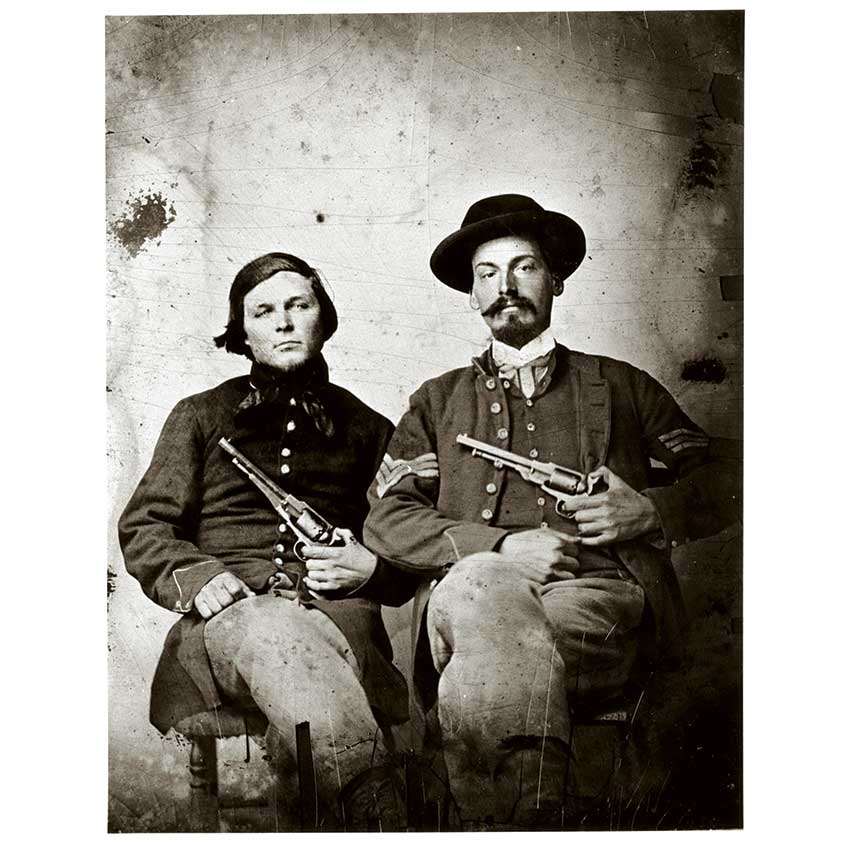
On the night of January 13, the ship sent out a picket boat with five sailors armed with Remington revolvers and muskets. During the night, while on picket duty, the sailors deserted and took their small arms with them. Two days later in an attack on Fort Fisher, a naval force of 2,000 sailors and Marines attacked the fort.
The attack was pushed back, but the army assault on the fort was successful in forcing it to surrender. In the attack, the sailors were armed with a variety of small arms, including Remington revolvers. Twenty-five Remingtons were reported lost during the attack. The largest losses of Remingtons were in the landing parties of the Mackinaw and Vanderbilt.
During the war more than 60 naval vessels were issued Remington revolvers. Some of the ships included the Avenger, Champion, Ethan Allen, Gem of the Sea, General Lyon, Iroquois, Marmara, Niphon, Onondaga, Paul Jones, Tennessee, Young Rover. One other ship that issued Remington revolvers was the U.S. Naval Academy practice ship, the sloop U.S.S. Macedonian. In November 1863, 30 Remington revolvers and 98 Sharps & Hankins carbines were sent to the ship for use by the Naval Academy cadets.
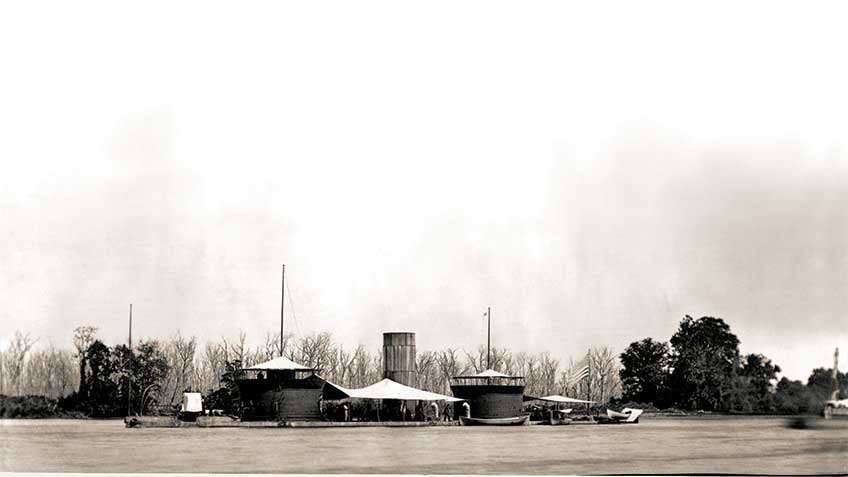
Many Union cavalry regiments formed in the early part of the war were armed with only revolvers and sabers. One such unit was the 17th Pennsylvania Cavalry formed in the fall of 1862. Its men were armed with Remington .36-cal. revolvers and a few Colt .36s and .44s. Just prior to Gettysburg, the 17th received a quantity of carbines to go with its revolvers.
At Gettysburg, the 17th was part of Buford’s Cavalry on the first day, which held back the Confederate infantry until the arrival of Union infantry. About a month prior to Gettysburg, the sabers and revolvers were extensively used in the cavalry action at Brandy Station.
In the charges and counter attacks, the Union cavalry fought Jeb Stuart’s Confederate cavalry to a draw. In that engagement the 2nd New York, 3rd West Virginia and the 17th Pennsylvania cavalries were partially armed with Remington revolvers.
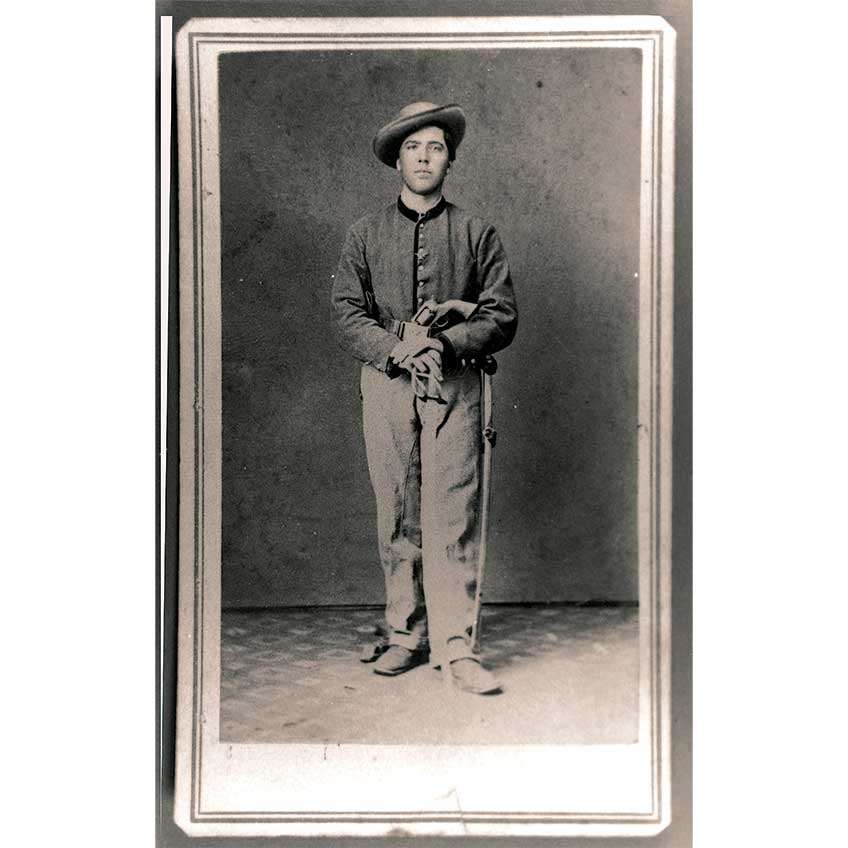
Confederate Col. John S. Mosby and his men were able to obtain a quantity of Remington revolvers compliments of the Union cavalry. In one such action on Dec. 6, 1864, 51 men of the 21st New York Cavalry were reconnoitering “Mosby’s Confederacy.” On their return to camp, Mosby ambushed the patrol.
The Union troopers were trapped in a narrow wooded road where only their revolvers could be used with any degree of success. The cavalrymen of the 21st New York, being outnumbered, quickly retreated. They suffered 29 casualties, of which 24 were captured. Mosby, in that engagement, acquired a quantity of Remington revolvers, Burnside carbines and Union horses.
By the spring of 1865 the U.S. Army of the Potomac Cavalry Corps was armed with 3,200 “New Model” Remington .44-cal. revolvers out of a total of about 8,300 revolvers. The majority of its revolvers were Colts, but there were a few Starrs.
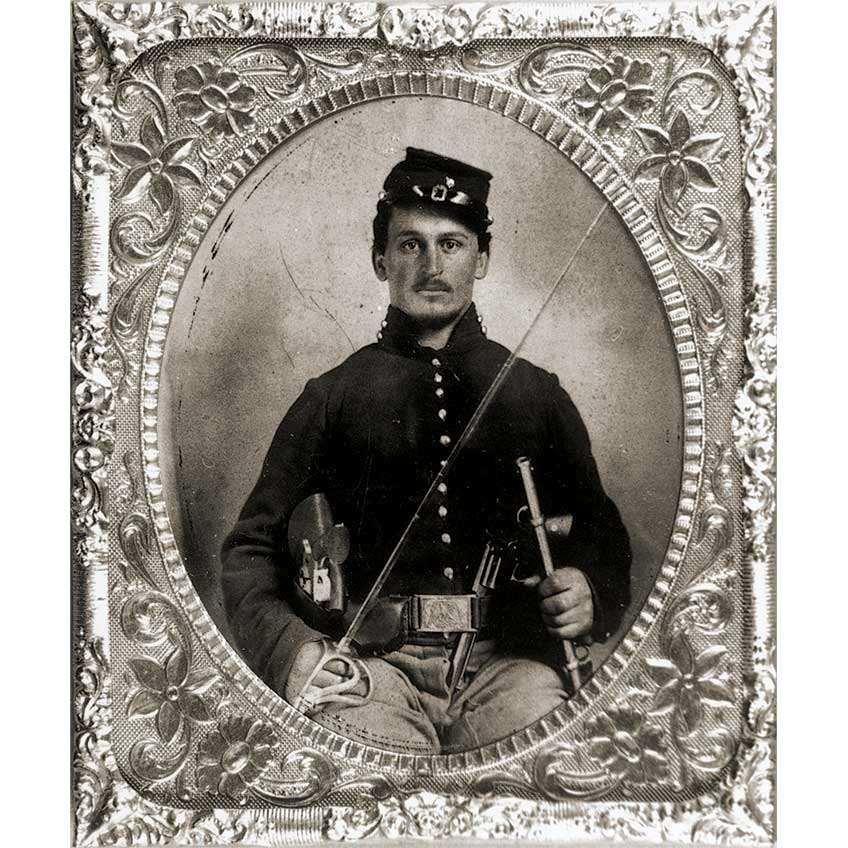
During the war, more than 80 Union cavalry regiments were partially armed with Remingtons. Some of the cavalry regiments armed with Remingtons were 2nd and 8th Illinois, 4th and 7th Iowa, 1st Vermont, 4th U.S. Regulars, 1st D.C., 6th Missouri, 11th and 22nd Pennsylvania, and 1st and 3rd Wisconsin.
During the war years, E. Remington & Sons sold to the Army 12,251 caliber .36 revolvers and 115,557 caliber .44s. In addition the Army also took delivery of a quantity of rifles, rifle muskets and carbines from Remington. The Navy deliveries of Remington .36-cal. revolvers came to 5,960. E. Remington & Sons had, indeed, made its contribution in the defense of the country.














